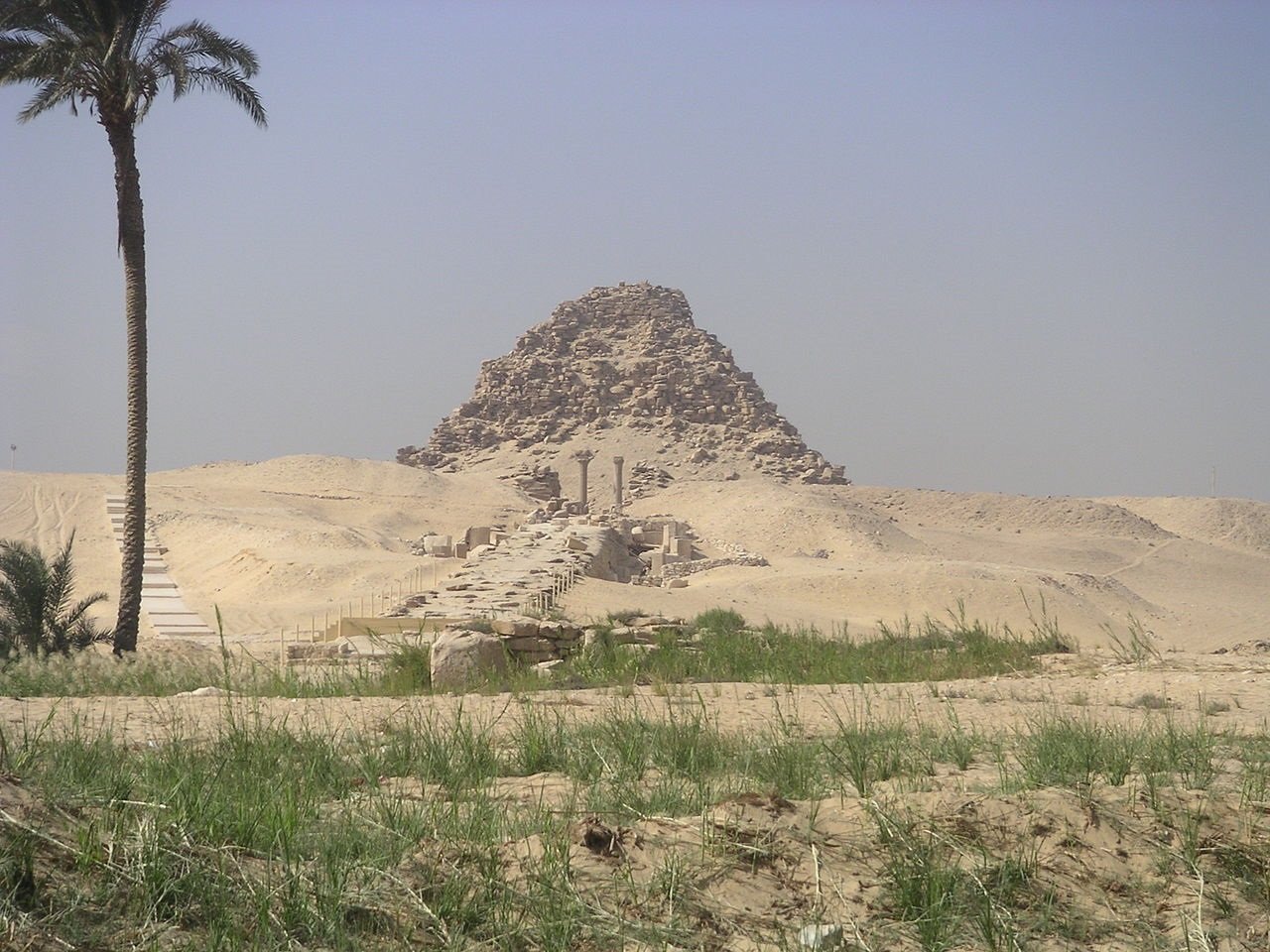A joint Egyptian-German archaeological mission, led by Dr. Mohamed Ismail Khaled, an Egyptologist from the Department of Egyptology at Julius-Maximilians-Universität of Würzburg (JMU), has made a significant discovery within Sahura’s pyramid.
 View of the pyramid of Sahourê in Abousir. Public domain
View of the pyramid of Sahourê in Abousir. Public domain
The pyramid complex, attributed to King Sahure, the second ruler of Egypt’s Fifth Dynasty (c. 2400 BCE), is located in Abusir, Giza. This find reveals previously undocumented storage rooms within the pyramid.
The conservation and restoration project, initiated in 2019 and supported by the Antiquities Endowment Fund (AEF) of the American Research Center in Egypt (ARCE), aimed to protect the substructure of Sahura’s pyramid.
The team’s work focused on cleaning interior rooms, stabilizing the pyramid, and preventing further collapse, making the burial chambers accessible. As part of the restoration process, the original dimensions were identified, and the floor plan of the antechamber, which had deteriorated over time, was uncovered. The damaged walls were replaced with new retaining walls to preserve the pyramid’s structural integrity.
During the restoration, researchers came across traces of a pᴀssageway originally observed by British Egyptologist John Perring in 1836. Perring’s excavation was limited due to the pᴀssage being filled with debris, leading him to believe it might lead to storage rooms.
However, subsequent explorations by Ludwig Borchardt in 1907 cast doubt on this theory. To everyone’s surprise, the recent Egyptian-German team confirmed the existence of the pᴀssage, demonstrating that Perring’s observations were correct. The excavation continued, ultimately revealing eight storerooms.
Though the northern and southern parts of these storage rooms, including the ceiling and original floor, were severely damaged, remnants of the original walls and sections of the floor were still visible. The restoration work aimed to strike a balance between preserving these rooms and making them accessible for study and potentially public viewing.
The project also utilized cutting-edge technology, such as 3D laser scanning with a ZEB Horizon portable LiDAR scanner from GeoSLAM, in collaboration with the 3D Geoscan team. This advanced technology facilitated detailed surveys of both the extensive external areas and the narrow corridors and chambers inside the pyramid. Real-time scanning updates and a permanent record of the exploration were created, enhancing the understanding of Sahura’s pyramid and challenging existing paradigms in pyramid construction.
The discovery of the storerooms represents a significant milestone in understanding the architectural innovations of King Sahure, who may have been a pioneer in this field. Sahure’s reign is noted for trade, naval development, and mining activities, and the pyramid’s decorative reliefs and architecture are considered remarkable achievements.





